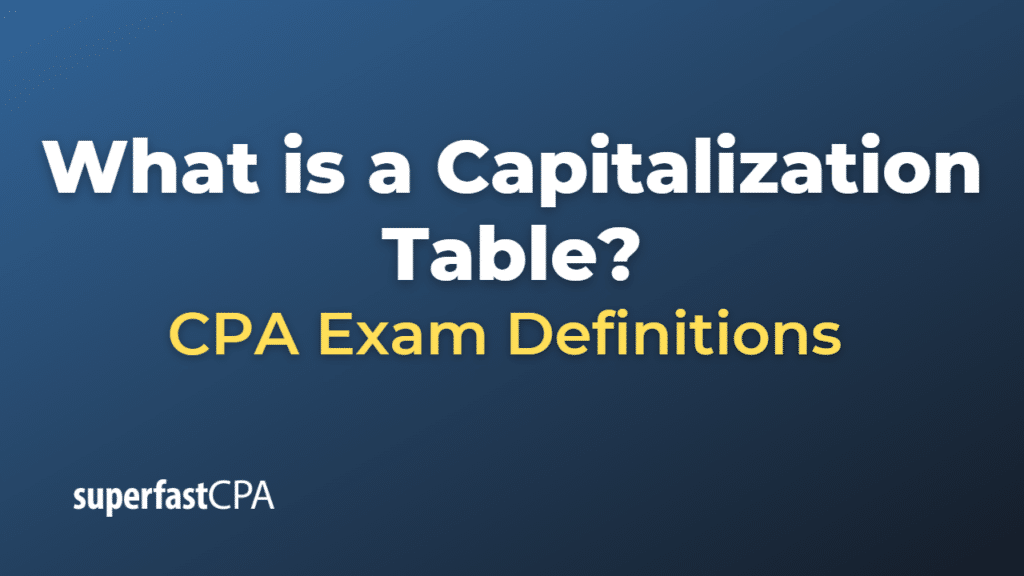Capitalization Table
A capitalization table, or cap table, is a document that provides a detailed summary of a company’s ownership structure. It shows the percentage of ownership, equity dilution, and the value of equity for each shareholder or investor in the company. Cap tables are commonly used by privately-held companies, especially startups, to track ownership stakes and the value of each shareholder’s equity as the company grows and raises additional funding.
A typical capitalization table includes the following information:
- Shareholder Names: The names of all the company’s shareholders, including founders, employees, and investors.
- Number of Shares: The number of shares each shareholder owns.
- Share Class: The type of shares owned by each shareholder (e.g., common shares, preferred shares, or any other class of shares with specific rights or preferences).
- Ownership Percentage: The percentage of ownership each shareholder has in the company based on their shareholding.
- Share Price: The price per share at which each investor or shareholder acquired their shares.
- Option Pool: The number of shares set aside for employee stock options or other equity compensation plans.
Capitalization tables change over time as companies issue new shares, repurchase existing shares, or grant stock options to employees. They are crucial for managing the company’s equity and for providing transparency to investors and other stakeholders about the ownership structure and the potential impact of future transactions, such as new investment rounds, acquisitions, or exits.
Cap tables can be created and maintained using spreadsheet software like Microsoft Excel or Google Sheets, or specialized cap table management tools designed to automate and simplify the process of tracking equity ownership and updating the table as the company evolves.
Example of a Capitalization Table
Let’s consider a fictional startup called “GreenTech Innovations” to illustrate a simple capitalization table. This example assumes that GreenTech Innovations has issued common shares only, and the company’s total shares outstanding are 1,000,000. Here’s a basic cap table for GreenTech Innovations:
| Shareholder | Number of Shares | Ownership Percentage | Share Price | Value of Equity |
|---|---|---|---|---|
| Founder A | 400,000 | 40% | $1.00 | $400,000 |
| Founder B | 300,000 | 30% | $1.00 | $300,000 |
| Angel Investor | 200,000 | 20% | $1.50 | $300,000 |
| Employee Stock Pool | 100,000 | 10% | N/A | N/A |
|---|---|---|---|---|
| Total | 1,000,000 | 100% | N/A | $1,000,000 |
In this example:
- Founder A owns 400,000 shares (40% of the company) with a total equity value of $400,000.
- Founder B owns 300,000 shares (30% of the company) with a total equity value of $300,000.
- An angel investor owns 200,000 shares (20% of the company) at a share price of $1.50, with a total equity value of $300,000.
- An employee stock pool has been set aside, consisting of 100,000 shares (10% of the company). These shares are reserved for future equity grants to employees and have not yet been assigned a specific value.
The cap table provides a clear snapshot of GreenTech Innovations’ ownership structure and the value of each shareholder’s equity. As the company raises additional funding, issues new shares, or grants stock options to employees, the cap table will be updated to reflect these changes and provide an accurate representation of the company’s ownership structure at any given time.













